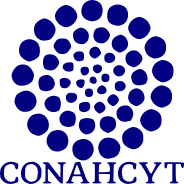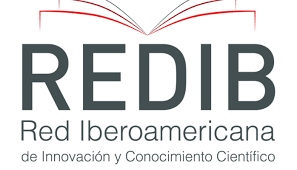Comparision of seed germination and seedlings initial development of Agave angustifolia Haw. and Agave karwinskii Zucc. in vitro and greenhouse conditions
DOI:
https://doi.org/10.18387/polibotanica.59.12Keywords:
Agave, germination, in vitro culture, stomataAbstract
Agaves are keystone species in arid and semi-arid ecosystems. They are of great economic importance as well due to the products that can be obtained from them. Within these products is worth highlighting mezcal, a spirit whose production and consumption has markedly increased in recent years. Mezcal can be elaborated with several different species, A. angustifolia and A. karwinskii among them; in the case of these species, wild specimens are frequently used for production, which leads to unsustainable exploitation systems. Plant tissue culture (PCT) is a viable option to generate a great number of plant specimens in a considerably shorter amount of time than with traditional means. However, it is important to understand the characteristics of in vitro plants to understand the reach of PTC. In this study, the differences between germination and early development of seedlings, in vitro and in soil, of A. angustifolia and A. karwinskii were analyzed. For both species, the results indicate no difference between soil and in vitro germination. In early development, in vitro seedlings accumulated a larger biomass than those in soil, as well as longer leaves. However, these were not succulent leaves and presented atrophied stomata as well as little epicuticular wax. These morphophysiological alterations must be accounted for in the acclimation stage to an external environment in order to increase the survival rate of in vitro specimens. Notwhithstanding, the large number of plants that can be produced in such short period of time make up for the presence of said alterations.
References
Aragon, P., Pascual, P., González, J., Escalona, M., Carvalho, L., Amancio, S. (2013). The physiology of ex vitro pineapple (Ananas comosus L. Merr. Var MD-2) as CAM or C3 is regulated by the environmental conditions: proteomic and transcriptomic profiles. Plant Cell Reports, 32, 1807-1818. https://doi.org/10.1007/s00299-013-1493-3
Arzate-Fernández, A. M., Mejía-Franco, R. (2011). Capacidad embriogénica de callos inducidos en ejes embrionarios cigóticos de Agave angustifolia Haw. Revista Fitotecnia Mexicana, 34, 101-106.
Barrientos-Rivera, G., Esparza-Ibarra, E.L., Segura-Pacheco, H.R., Talavera-Mendoza, O.T., Sampedro-Rosas, M.L., Hernández Castro, E. (2020). Caracterización morfológica de Agave angustifolia y su conservación en Guerrero, México. Revista Mexicana de Ciencias Agrícolas, 10(3), 655-668.
Bautista-Montes, E., Hernández-Soriano, L., Simpson, J. (2022). Advances in the micropropagation and genetic transformation of Agave species. Plants 11, 1757. https://doi.org/10.3390/plants11131757
Bernardino-Nicanor, A., Mora-Escobedo, R., Montañez-Soto, J.L., Filardo-Kerstupp, S., González-Cruz, L. (2012). Microstructural differences in Agave atrovirens Karw leaves and pine by age effect. African Journal of Agricultural Research, 7(24), 3550-3559. https://doi.org/10.5897/AJAR11.1185
Catán, A., Degano, C.A.M., Larcher, L. (2003). Modificaciones a la técnica histológica de Peña Neira para especies forrajeras del Chaco Semiárido Argentino. Revista de Ciencias Forestales, 10, 71-75
Chávez-Güitrón, L.E., Salinas-Pérez, F.C., Pérez-Salinas, E.A., Caballero, J., Vallejo-Zamora, A., Sandoval-Zapotitla, E. (2019). Variación de caracteres epidérmico-foliares de Agave salminana subsp. Salmiana (Asparagaceae) en el centro de México. Botanical Sciences. 97(4), 711-724. https://doi.org/10.17129/botsci.2159
Cruz-García, H., Campos-Ángeles, G.V., Enríquez-del Valle, J.R., Velasco-Velasco, V.A., Rodríguez-Ortiz, G. Senescencia foliar en plantas micropropagadas de Agave americana durante su aclimatización. Revista Mexicana de Ciencias Agrícolas. 8:2:381-39. https://10.29312/remexca.v8i2.58
Domínguez-Rosales, M.S., Alpuche-Solís, A.G., Vasco-Méndez, N.L., Pérez-Molphe-Balch, E. (2008). Efecto de citocininas en la propagación in vitro de agaves mexicanos. Revista Fitotecnia Mexicana 31(4), 317-322.
Francisco-Francisco, N., García-Osuna, H.T., Benavides-Mendoza, A., Hernández-Juárez, A., Ramírez-Godina, F. (2016). Morfología y anatomía foliar de Dasylirion cedrosanum en diferentes etapas de Desarrollo. Revista Mexicana de Ciencias Agrícolas, 7(7), 1679-1687.
Gray, A., Liu, L., Facette, M. (2020). Flanking support: how subsidiary cells contribute to stomatal form and function. Frontiers in Plant Science, 11, 881. https://doi.org/10.3389/fpls.2020.00881
Hernández-Valencia, R., López-franco, R., Benavides-Mendoza, A. (2003). Micromorphology of the foliar eplidermis of Agave tequilana Weber. Agrofaz, 3, 387-396.
Joshi, P., Joshi, N., & Purohit, S. (2006). Stomata characteristics during micropropagation of Wrightia tomentosa. Biologia Plantarum, 50, 275-278.
Malda, G., Backhaus, R.A., Martin, C. (1999). Alterations in growth and crassulacean acid metabolism (CAM) activity of in vitro cultured cactus. Plant Cell, Tissue and Organ Culture. 58, 1-9. https://doi.org/10.1023/A:1006377206855
Matiz, A., Mioto, P., Yepes, A., Freschi, L. (2013). CAM Photosynthesis in Bromeliads and Agaves: what can we learn from these plants? En Dubinsky, Z. (Ed.), Photosynthesis, 91-133. https://doi.org/10.5772/56219
Murashige, T., Skoog, F. (1962). A revised medium for rapid growth and bio assays with tobacco tissue cultures. Physiologia Plantarum, 15, 473-497.
Navarro, M., Febles, G., Torres, V. (2012). Bases conceptuales para la estimación del vigor de las semillas a través de indicadores del crecimiento y el desarrollo inicial. Pastos y Forrajes, 35(3), 233-246.
Nobel P. S. (1988). Environmental Biology of Agaves and Cacti. Cambridge University Press.
Pérez-España, V.H., Cuervo-Parra, J.A., Aparicio-Burgos, J.E., Morales-Ovando, M.A., Peralta-Gil, M., Romero-Cortés, T. (2022). Importancia de la capa cuticular durante la colonización del hongo causante de la negrilla en Agave salmiana Otto ex Salm-Dyck spp. salmiana. Revista Mexicana de Ciencias Forestales, 13(70). https://doi.org/10.29298/rmcf.v13i70.1265
Polivanova, O.B., Bedarev, V.A. (2022). Hyperhydricity in plant tissue culture. Plants, 11(23), 3313. https://doi.org/10.3390/plants11233313
Ramírez-Tobías, H.M., Peña-Valdivia, C.B., Trejo, C., Aguirre-R., J.R., Vaquera-H., H. (2014). Seed germination of Agave species as influenced by substrate water potential. Biological Research, 47(11).
Torres, I., Blancas, J., León, A., Casas, A. (2015). TEK, local perception of risk and diversity of management practices of Agave inequidens in Michoacán, México. Journal of Ethnobiology and Ethnomedicine, 11(61).
Vázquez-Pérez, N., Blancas, J., Torres-García, I., García-Mendoza, A., Casas, A., Moreno-Calles, A.I., Maldonado Almanza, B., Rendón-Aguilar, B. (2020). Conocimiento y manejo tradicional de Agave karwinskii en el sur de México. Botanical Sciences, 98(2),328-347. https://doi.org/10.17129/botsci.2421
Villegas-Monter, A., Castro-Garibay, S.L. (2024). Disinfestation of Agave angustifolia Haw. collected in the field prior to in vitro culture. Agro Productividad. https://doi.org/10.32854/agrop.v16i12.2299

Downloads
Published
License

Polibotánica by Departamento de Botánica de la Escuela Nacional de Ciencias Biológicas del Instituto Politécnico Nacional se distribuye bajo una Licencia Creative Commons Atribución-NoComercial-CompartirIgual 4.0 Internacional.



















